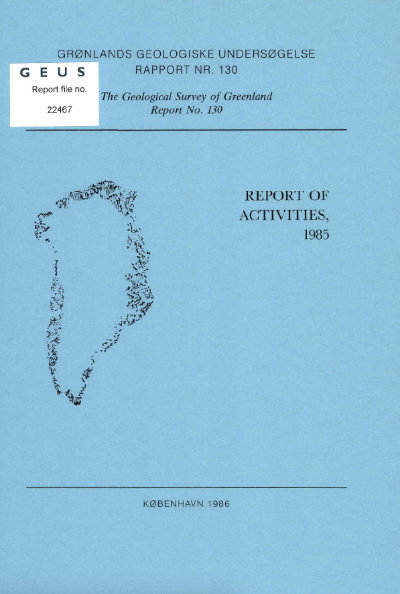Source rock investigations and shallow core drilling in central and western North Greenland
DOI:
https://doi.org/10.34194/rapggu.v130.7936Abstract
The aim of project 'Nordolie' (Christiansen & Rolle, 1985) is to study the distribution and maturity of potential hydrocarbon source rocks in central and western North Greenland. A first broad reconnaissance and examination of most lithostratigraphic units throughout the region in 1984, followed by organic geochemical and palynofacies analyses, showed that some intervals in the Cambrian shelf sequence and in the Cambrian to Silurian trough sequence are sufficiently rich in organic matter to be considered as potential source rocks (Christiansen et al., 1985). The Cambrian and Ordovician trough sequence is thermally postmature with respect to hydrocarbon generation in the whole area. Consequently the second and final field programme within the project (1985) concentrated on the Cambrian shelf sequence (especially the Henson Gletscher Formation in the Brønlund Fjord Group) and the Silurian slope to trough sequence (Lafayette Bugt Formation and Wulff Land Formation). The main purpose of the 1985 work was to make a detailed study of these units combining field work and shallow core dril!ing. The samples and cores provide the basis for later detailed maturity studies and a quantitative evaluation of source rock quality and volume. As in 1984, the 1985 field season was fully integrated with the geological mapping programme in the region (Henriksen, this report). The field work was carried out by a team of two geologists and a dril!ing team with three technicians (John Boserup, Anders Clausen, Jørgen Bojesen-Koefoed) and a dril! site geologist. The three geologists alternated often in order to obtain continuity in the programme and furthermore six of the total 14 camps were located at the dril! sites (fig. 1).
Downloads
Published
Issue
Section
License
This article is distributed under a CC-BY 4.0 licence, permitting free redistribution and reproduction for any purpose, even commercial, provided proper citation of the original work. Author(s) retain copyright over the article contents.


